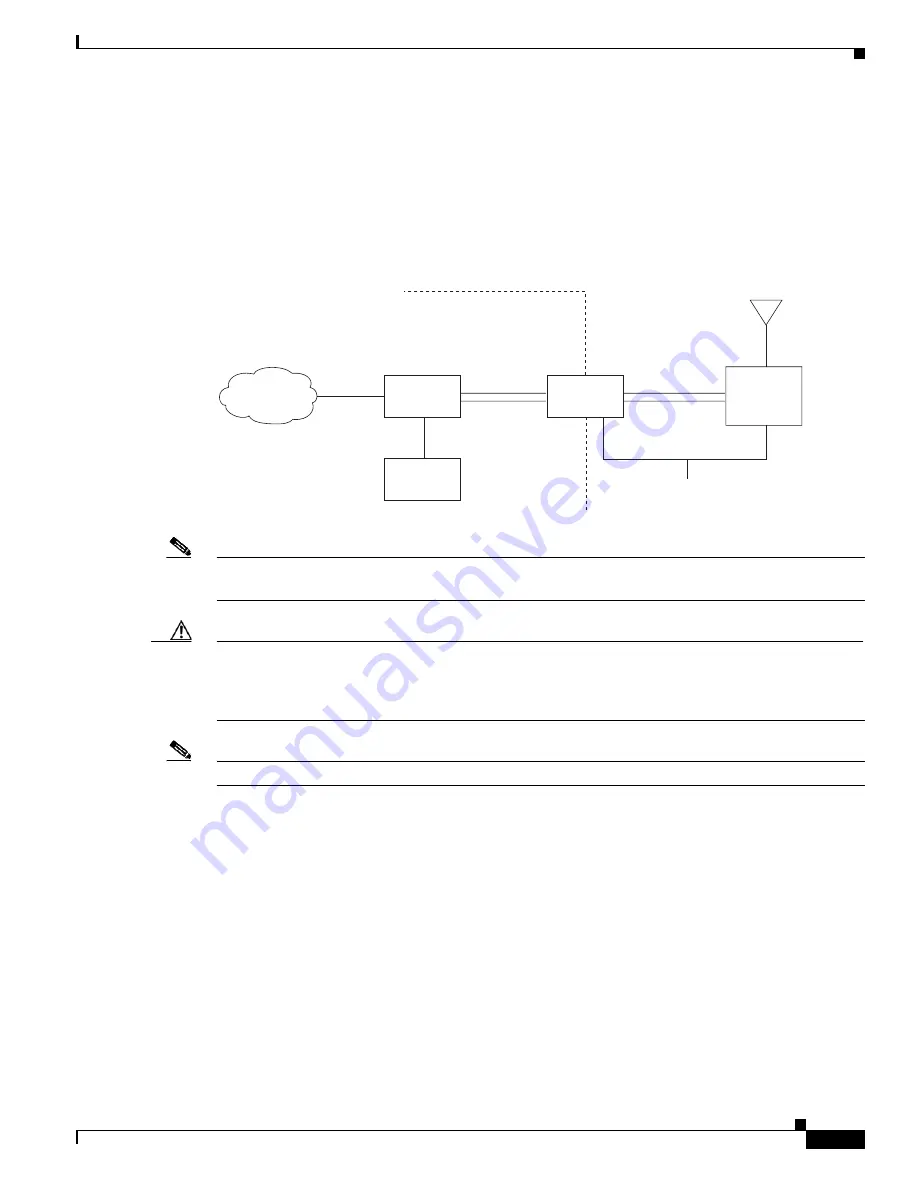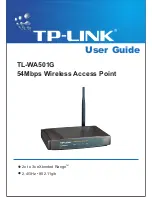
2-5
Cisco Aironet 1300 Series Outdoor Access Point/Bridge Hardware Installation Guide
OL-5048-02
Chapter 2 Installation Overview
Installation Guidelines
Typical Outdoor Installation Components
The access point/bridge is designed to be installed in an outdoor environment, typically on a tower or a
tall building. A typical installation diagram is shown in
Figure 2-1
.
Figure 2-1
Typical Outdoor Installation Diagram
Note
Ground wires must comply with Sections 810 and 820 of the National Electrical Code and Section 54 of
the Canadian Electrical Code.
Caution
To ensure correct installation and grounding, install the access point/bridge in compliance with your
local and national electrical codes: National Fire Protection Association (NFPA) 70, National Electrical
Code (U.S.); Canadian Electrical Code, Part I, CSA 22.1 (Canada); and if local or national electrical
codes are not available, refer to IEC 364, Part 1 through 7 (other countries).
Note
The grounding block is not required for indoor installations of the access point/bridge.
Installation Guidelines
Because the access point/bridge is a radio device, it is susceptible to common causes of interference that
can reduce throughput and range. Follow these basic guidelines to ensure the best possible performance:
•
Install the access point/bridge in an area where structures, trees, or hills do not obstruct radio signals
to and from the unit.
•
Install the access point/bridge at a height sufficient to provide a clear line-of-sight signal path.
88836
Category 5
Ethernet
cable
Dual-coax
cables
Dual-coax
cables
Indoor
Building
entrance
Outdoor
Ground
(see note)
Power
injector
Power
module
Grounding
block
Bridge
Integrated
or
external antenna
LAN network
















































